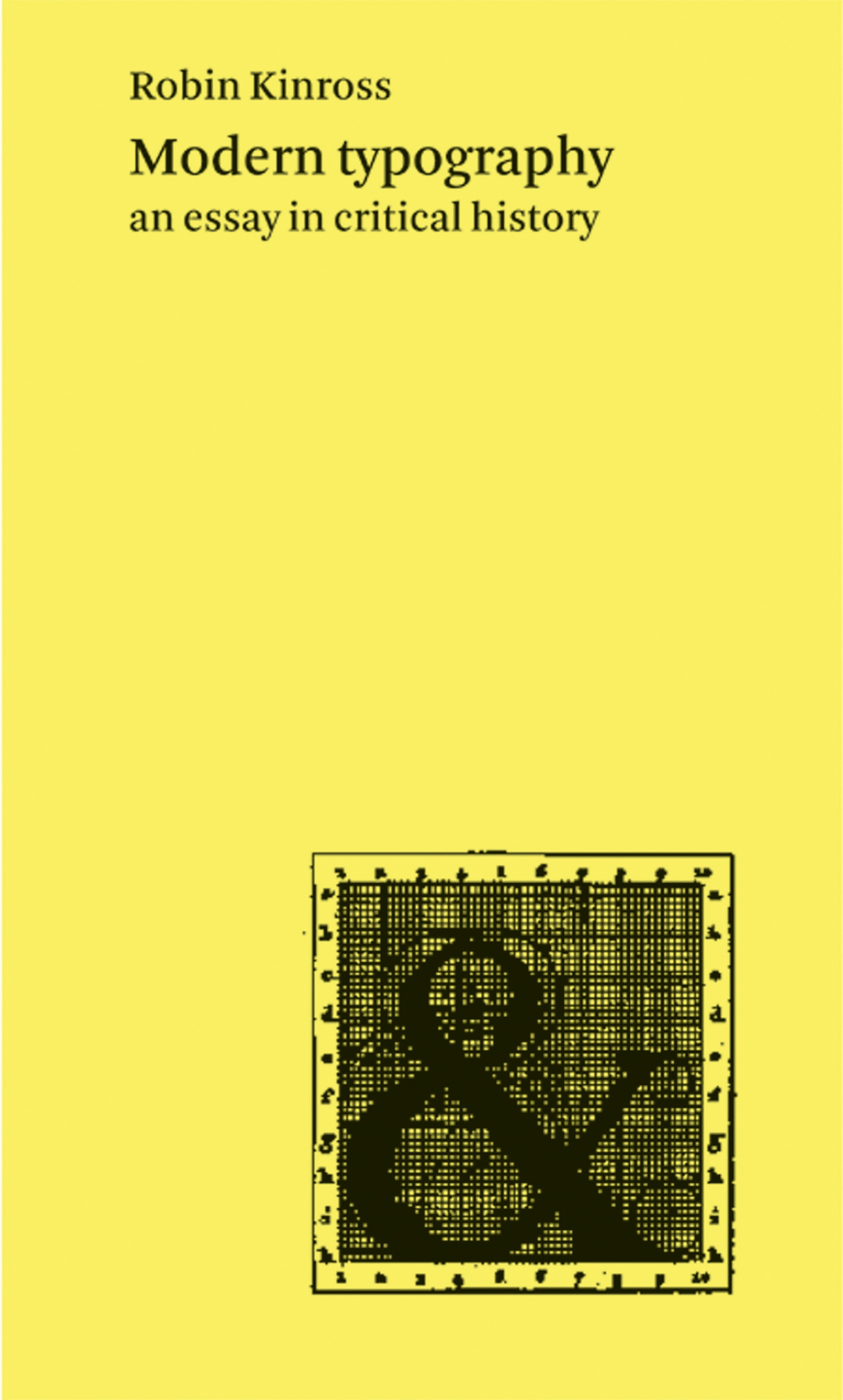A brisk tour through the history of Western typography, from the time (c.1700 in France and England) when it can be said to have become ‘modern’. A spotlight is directed at different cultures in different times, to trace the developments and shifts in modern typography. Attention is given to ideas, to social context, and to technics, thus stepping over the limited and tired tropes of stylistic analysis. This is a reprint of the second edition, which has some variations in the pictures as well as corrections and updatings in the text.
Our edition of this book has now been taken over by Éditions B42. Go here.
[September 2019]
Contents
Preface & acknowledgements
Modern typography
Enlightenment origins
The nineteenth-century complex
Reaction and rebellion
Traditional values in a new world
New traditionalism
Cultures of printing: Germany
Cultures of printing: the Low Countries
New typography
Emigration of the modern
Aftermath and renewal
Swiss typography
Modernity after modernism
Examples
Postscript on reproduction
Sources: commentary
Sources: bibliography
Index
Synopsis
This history of typography starts with the early years of the Enlightenment in Europe, around 1700. It was then that typography began to be distinct from printing. Instructional manuals were published, a record of the history of printing began to be constructed, and the direction of the printing processes was taken up by a new figure: the typographer. This starting point gives the discussion a special focus, missing from existing printing and design history. Modern typography is seen as more than just a modernism of style. Rather it is the attempt to work in the spirit of rationality, for clear and open communication. This idea is argued out in the introductory chapter.
The chapters that follow trace the history of typography up to the present moment. Different cultures and countries become the focus for the discussion, as they become significant. In the nineteenth century, Britain provides the main context for modern typography. In the twentieth century, the USA and certain continental European countries are prominent. Kinross provides concise accounts of modernist typography in Central Europe between the wars and in Switzerland in the 1950s and 1960s. Traditionalist typography in the USA, Britain, Germany and the Low Countries is also discussed sympathetically. A concluding chapter considers ‘modern typography’ in the light of the social, political and technical changes of the recent period.
A separate chapter of illustrations resumes the argument. Representative examples are shown, and analysed in captions.
The book concludes with a critical discussion of the literature of typographic history, and a full bibliography.
For this second edition, the reference content of the first edition (1992) has been thoroughly revised, the concluding chapter rewritten, and the illustrated examples are presented in freshly made colour pictures.
Reviews
Every chapter throws up some surprises and prompts questions about our own attitudes to typography and its practice. I don’t agree with the basic tenets of the book, but find the story fascinating and stimulating just the same.
Phil Baines, Blueprint, no. 92, 1992
But what makes this book a must-read for all designers, and for my proposed accreditation course, is that it is the first history of typography with a critical thesis. As typography becomes more fashionable, and graphic design more democratic, the design books of the furture must strive for this level of intellectual rigor or become trivial by default.
Steven Heller, Print, March/April 1994
This is a book to read and reread. It is provocative, dense, opinionated, and thoroughly original. It is well written and does not insult the reader’s intelligence by restating the obvious. It deserves to become a classic.
Alastair Johnston, Bookways, October 1993
Here are neither definitive conclusions nor firm guidelines. This book offers a great deal more – it is a complete redefinition of the subject and a basis for all subsequent discussions.
Giovanni Lussu, Lineagrafica, no. 288, 1993





